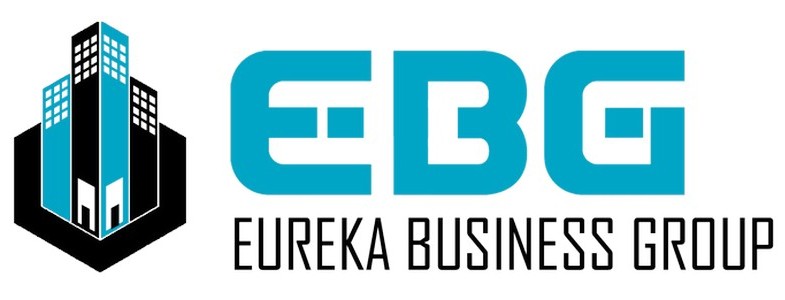- Home
- Industrial
- Industrial Investors Resources
- How to Negotiate Leases for Industrial Flex Properties!
How to Negotiate Leases for Industrial Flex Properties!
Industrial flex properties are gaining popularity due to their versatility, offering space for manufacturing, distribution, office work, and even retail. However, negotiating a lease for these properties requires a strategic approach, as the lease structure must accommodate both the operational needs of the business and the property owner’s financial goals. Here’s a guide on how to approach and successfully negotiate leases for industrial flex properties.
1. Understand the Basics of Flex Space Leasing
Before jumping into negotiations, it’s essential to understand what flex spaces are and how they differ from traditional industrial or office leases. Flex spaces are designed to provide both office and industrial use within the same building. This flexibility makes them highly attractive to businesses with diverse operational needs, such as e-commerce companies, manufacturers, and distribution centers.
Typical Characteristics of Flex Spaces Include:
- Mixed-use space that can be adapted for office, showroom, manufacturing, or storage
- Open floor plans allowing for easy customization
- Higher ceilings than traditional office spaces
- Shared or private loading docks and sometimes multiple entry points
Because of this versatility, negotiating a lease requires attention to specific details, including zoning, space utilization, and lease term length.
2. Prepare with Market Research
Market research is a vital first step in any lease negotiation. Understanding market rates for industrial flex properties in the area helps establish a baseline, giving you an advantage when negotiating rental rates and lease terms. Look for data points such as:
- Average price per square foot in your desired location
- The types of concessions or incentives other tenants have received
- Current vacancy rates for industrial flex spaces
Equipped with this knowledge, you’ll be better positioned to negotiate a fair rental rate and be aware of market-standard concessions, like free rent periods or landlord-provided improvements.
3. Determine Your Space Requirements
Flex properties are highly customizable, but the size and layout you need will significantly impact negotiations. Carefully evaluate the square footage required for each use, such as:
- Office area
- Storage or warehousing
- Manufacturing or light assembly
By being clear about your needs upfront, you can avoid paying for unnecessary space while also securing the specific amenities you require, like specialized ventilation, reinforced flooring, or additional electrical capacity.
4. Understand the Different Lease Structures
Industrial flex leases may be structured differently than traditional office or retail leases. Common lease types include:
- Triple Net (NNN) Lease: In this structure, the tenant is responsible for property taxes, insurance, and maintenance costs. This is common for industrial spaces, as it reduces the landlord’s ongoing responsibilities.
- Modified Gross Lease: The tenant pays base rent and a portion of the property’s operating expenses. This structure provides more stability for budgeting purposes, as many operating costs remain fixed.
- Full-Service Lease: This type, while less common for industrial properties, includes all operating expenses in the rental rate.
Understanding these options can give you flexibility in negotiations, especially if you’re looking to control expenses or prefer certain billing structures.
5. Negotiate for Favorable Lease Terms
Lease term length is a significant factor in industrial property negotiations. Landlords typically favor longer-term leases, but short-term agreements offer flexibility if your space needs change. Consider requesting:
- Shorter Initial Terms with Renewal Options: Propose a shorter initial lease, such as three years, with multiple renewal options. This approach offers both stability and flexibility, giving you an out if your business’s needs evolve.
- Early Termination Clauses: If you’re uncertain about future needs, an early termination clause (often with a penalty) allows you to exit the lease early under specific conditions.
- Expansion and Contraction Rights: If your business might grow or shrink, securing the right to expand into adjacent space or reduce your square footage can be a huge benefit.
6. Identify Build-Out and Improvement Needs
Industrial flex spaces often need customization to meet business requirements, from installing office walls to upgrading HVAC systems. Determine which improvements are essential, then negotiate for landlord contributions or tenant improvement allowances (TIAs) to offset these costs.
Tips for Success:
- Request a Tenant Improvement Allowance: This is a budget the landlord provides toward customizing the space. It’s especially common in competitive markets where landlords want to attract high-quality tenants.
- Ask for Permitting Assistance: Some industrial improvements, like electrical upgrades or exhaust systems, require permits. Request that the landlord handles or shares the cost of these permits.
7. Factor in Maintenance and Repair Obligations
Industrial spaces often involve higher maintenance demands, especially if they’re used for heavy-duty purposes. Negotiating who is responsible for specific repairs and maintenance can prevent disputes later. Common considerations include:
- HVAC Maintenance: Since HVAC units are costly to repair, many tenants negotiate for the landlord to cover these repairs or ensure the units are in good working condition at move-in.
- Parking Lot and Exterior Maintenance: Ensure the lease specifies responsibility for maintaining parking areas, landscaping, and shared facilities.
- Structural Repairs: For significant structural repairs, like roof or foundation issues, it’s common for the landlord to take responsibility.
8. Negotiate for Flexibility in Use Clauses
Industrial leases often include strict use clauses, specifying how the space can be used. However, with flex spaces, tenants may need the freedom to adjust the space’s function over time. During negotiations:
- Request Broad Use Terms: If you foresee evolving operations, negotiate for a broad use clause that allows flexibility, such as “any lawful industrial or office use.”
- Seek Approval for Future Modifications: If you plan on making changes down the road, ask for pre-approval for modifications like adding office partitions or expanding storage capacity.
9. Request a Cap on Operating Expenses
Operating expenses can fluctuate significantly, making them a potential source of unexpected costs. Requesting a cap on these expenses, particularly in a Triple Net (NNN) lease, helps maintain predictable expenses throughout the lease term. Consider asking for:
- Expense Caps: Ask the landlord to place a limit on annual increases in operating expenses, often 3-5% per year.
- Expense Audits: Request the right to audit operating expenses annually to ensure accuracy and accountability.
10. Plan for Renewal and Rent Escalations
Securing favorable renewal terms ensures your business has stability for the future. Since industrial leases often include rent escalation clauses, which gradually increase rent each year, it’s essential to set limits to control costs.
- Negotiate Fixed Rent Escalations: Agree on a fixed percentage increase, usually 2-3% annually, to avoid large, unexpected hikes.
- Right of First Refusal: If there’s a possibility of expanding into neighboring spaces, negotiate a first refusal option, giving you the priority to lease adjacent space when available.
11. Consult with a Commercial Real Estate Broker
Brokers with expertise in industrial properties bring significant value, especially for flex space leases. They can provide insights on:
- Market Comparables: Helping ensure you’re not overpaying
- Negotiation Strategy: Advising on favorable lease terms and potential pitfalls
- Local Regulations: Ensuring compliance with zoning and permitting requirements
Final Thoughts
Negotiating a lease for industrial flex properties is an opportunity to craft a contract that aligns with your business’s current and future needs. By researching the market, understanding lease structures, and negotiating for key terms, you can secure a lease that offers stability, flexibility, and financial predictability. This strategic approach not only protects your interests but also positions your business for growth within an adaptable space that can evolve alongside your operations.



